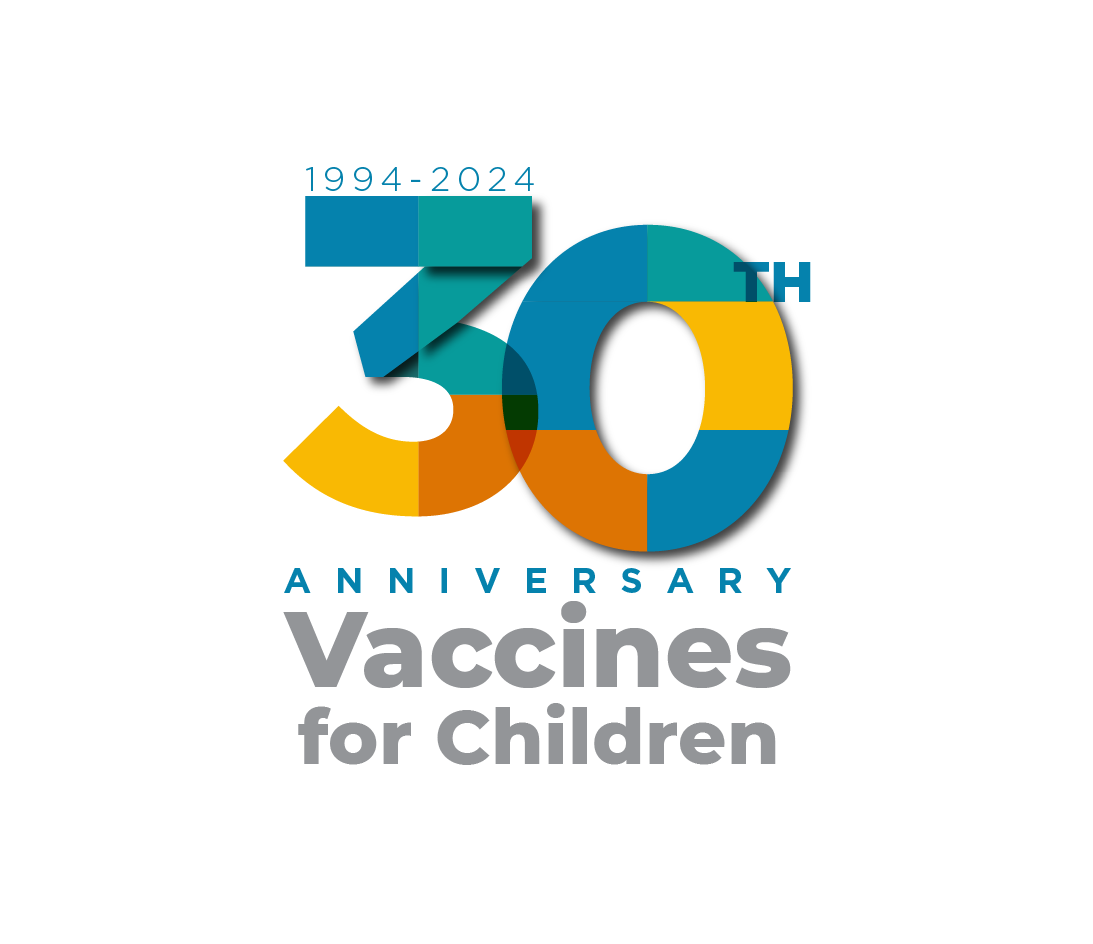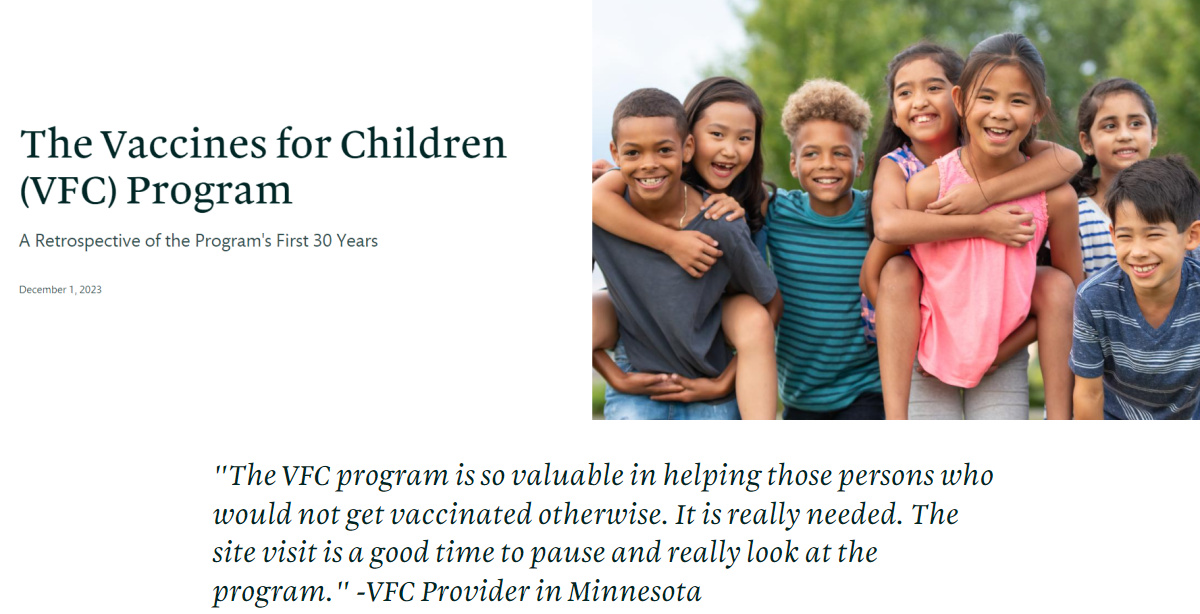About the Vaccines for Children (VFC) Program

In 1989 – 1991, a measles epidemic in the United States resulted in tens of thousands of cases of measles and hundreds of deaths. When this epidemic was investigated, the Centers for Disease Control and Prevention (CDC) found that more than half of the children who had measles had not been vaccinated against measles, even though many of them had seen a healthcare provider 123 . Cost of the vaccine was found to be a primary reason for children going unvaccinated even in families with a regular health care provider.
In response to this measles epidemic, Congress passed the Omnibus Budget Reconciliation Act (OBRA) on August 10, 1993, creating the VFC Program. The VFC Program became operational October 1, 1994. Known as Section 1928 of the Social Security Act , the Vaccines for Children Program is an entitlement program (a right granted by law) for eligible children, ages 18 and younger. The program was an unprecedented approach to improving vaccine availability nationwide by providing vaccine at no cost to VFC Program-eligible children through VFC Program enrolled public and private health care providers. Additional information on the history and benefits of the VFC Program.
Spotlight

How the VFC Program is funded
The Office of Management and Budget (OMB) approves funding for the VFC Program, then allocates the funds through the Centers for Medicare & Medicaid Services (CMS) to CDC. After receiving the funds, CDC buys the vaccines at a discount and distributes them to VFC Program providers at the direction of awardees (i.e., the 61 state, local, and territorial immunization programs who receive operational funding from the CDC to implement and oversee their VFC Programs). The legislation for the VFC Program provides general guidance for VFC Program policy development—including eligibility, provider recruitment, and considerations for negotiating contracts with manufacturers.
The VFC Program benefits the nation
The goal of the VFC Program is to ensure that a VFC Program-eligible child does not contract a vaccine-preventable disease because of their parent or guardian's inability to pay for the vaccine. As a primary driver of health equity in public health, the VFC Program supports improved immunization coverage levels among eligible children by:
- Protecting children's health:
- Automatically covers vaccines recommended by the Advisory Committee on Immunization Practices (ACIP) and approved by the CDC, which includes all vaccines for children ages 18 years and younger
- VFC Program-provided vaccines protect against 19 different diseases
- Prevents 472 million illnesses and 29.8 million hospitalizations
- Provides public-purchased vaccines for eligible children at no charge to VFC Program-enrolled public and private providers in all states and U.S. territories.
- Eliminates or reduces vaccine cost as a barrier to vaccinating eligible children.
- Saves parents and enrolled providers out-of-pocket expenses for vaccine.
- Provides cost savings to states via bulk purchases of vaccines through CDC's contracts at lower prices while eliminating state-to-state variations in price
- Saves nearly $2.2 trillion due to the prevention of illnesses
- Minimizing barriers to vaccination:
- Eliminates cost as a barrier to vaccinating children
- Provides opportunities for vaccinations at over 37,000 healthcare providers and locations, extending the reach of the VFC Program
- Enrolled providers increase the potential number of children vaccinated in an awardee's jurisdiction and allow VFC Program-eligible children to stay in their medical homes for comprehensive health care
- Reduces racial, ethnic, and socioeconomic disparities in child vaccination rates, improving equity.
- Discourages the practice of referring children from the private sector to the public sector for vaccination
- Allows enrolled private providers to receive publicly purchased vaccine.
- Coordinates with public agencies—including state health departments, state Medicaid programs, and programs serving families and children—to recruit and retain a network of VFC Program providers.
Related pages
- VFC Operations Guide
- Addendum: Special Considerations for COVID-19 Vaccine and Nirsevimab
- Vaccines for Children (VFC): Information for Parents
- Vaccines for Children (VFC): Information for Providers
- Vaccines for Children (VFC) Info for Awardees
- Recommended Immunization Schedules (ACIP)
- Association of Immunization Managers (AIM)
On This Page
- History of the VFC Program
- How the VFC Program is funded
- The VFC Program benefits the nation
- Related pages



